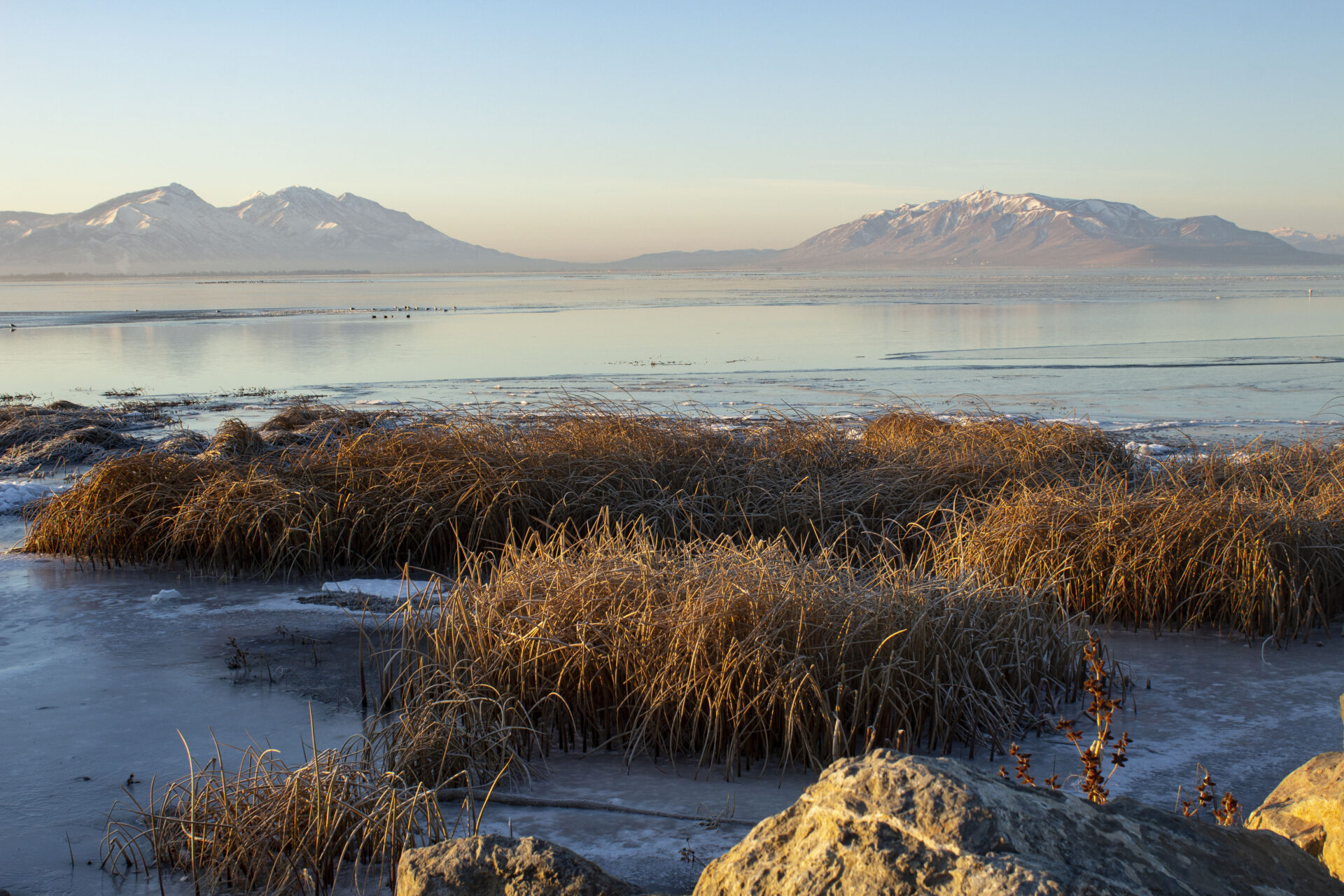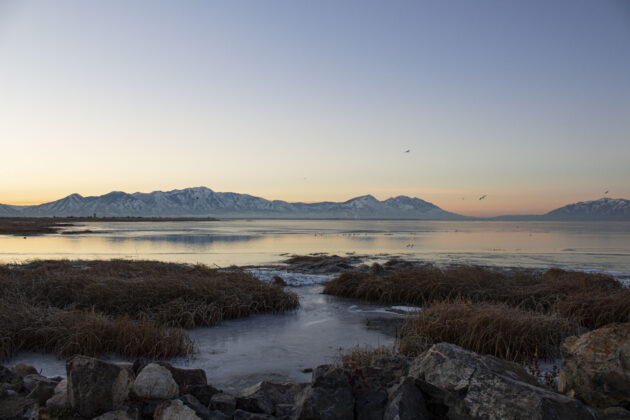
Lake Restoration Solutions filed a permit application with the United States Army Corps of Engineers at the end of last year, initiating a federal review process that will evaluate the environmental impact and public opinion surrounding the Utah Lake Restoration Project.
The permit, received by the Army Corps on Jan. 6, outlines the company’s proposal to transform Utah Lake into a cleaner, safer and more valued community resource.
Over the course of several years and five separate phases, Lake Restoration Solutions plans to remove invasive species, dredge the lake floor and construct more than a dozen islands, some of which will be developed for residential use to fund the project, the document says.
However, criticism of the project by environmental experts and a public relations campaign by non-profit Conserve Utah Valley have contributed to growing disfavor towards the project. Signs saying “Don’t Pave Utah Lake” can be seen in some Utah County front lawns and windows.
According to Jon Benson, BYU alum and chief operating officer of Lake Restoration Solutions, this opposition is largely based on a misunderstanding of the project’s underlying motives.
“Our primary goal is to restore Utah Lake to a clean and healthy state, and dredging and island creation are key components of that restoration effort,” Benson said.
He said real estate is not the company’s primary interest and each phase of the project would have environmental benefits, including reduction of algal blooms, removal of contaminated soil and redirection of strong winds.
“I think that’s the biggest misunderstanding that really frustrates us, when people just call us developers or think this is all about development,” he said.
In their efforts to “restore and enhance” Utah Lake, Lake Restoration Solutions plans to remove nearly 1 billion cubic yards of sediment from the lake floor, increasing the depth of the lake by an average of seven feet and providing material for 34 islands which will cover almost 19% of the lake’s area.
To those harboring doubts towards the project, Benson said healthy skepticism is warranted.
“I think that people are asking the right questions,” Benson said. “They want to make sure it’s done the right way and they want the outcome to be something that we can all be proud of. And we agree with that.”
Eric Ellis, executive director of the Utah Lake Commission, said the lengthy public review being conducted by the Army Corps, in concert with the federal government’s Environmental Protection Agency, will test the project’s scientific merit and answer many of the questions people have.
The federal review, required by the National Environmental Policy Act, will take 18–24 months and will have the power to stop the project if it does not meet the Environmental Protection Agency’s stringent requirements, Ellis said.
Ellis insisted the Utah Lake Commission is also committed to permitting the project only if it is the best option for the lake and community.
“The Utah Lake Commission truly desires for Utah Lake to be a sought-after natural resource here in Utah County,” he said. “Our goal is to make sure that that there is science driving the project. And so far, that seems to be the case.”
Though some in the community have complained Lake Restoration Solutions has not been transparent in its communication with the public, Ellis said it is normal for a project of this size to undergo a long process of tentative planning, preliminary research and private discussion before any sort of final plan is formed and presented to the public.
“We stand behind the process,” he said.
Others have found issue with the process, including BYU ecosystem ecology professor Benjamin Abbott who is one of the project’s most outspoken critics.
At a press conference on Feb. 1, Abbott shared his feelings saying Lake Restoration Solutions has not shown they are serious about receiving input from the community about the project.
“I reserve the right to say no,” he said. “Our community has the right to debate and decide whether or not this is the right direction for us and the lake that is our sacred trust.”
Abbott spoke at the press conference in response to a lawsuit filed by Lake Restoration Solutions which names him as the defendant. The suit claims Abbott made several false statements in social media and blog posts which portrayed Lake Restoration Solutions in false light, interfered with the company’s economic relations and amounted to defamation.
Abbott and his attorneys allege the lawsuit is a Strategic Lawsuit Against Public Participation, or SLAPP. Benson, however, denied the lawsuit is intended to silence public participation.
For Amelia Powers Gardner, a Utah County native who was elected last year to be the county’s first female commissioner, the problem facing the community has less to do with the project to transform the lake and more to do with how the communication surrounding the project devolved.
The escalating emotions and tense accusations relating to the Utah Lake Restoration Project are symptoms of growing public polarization and unwillingness to share points of view, Gardner said.
“It doesn’t matter whether we’re talking about a project to restore Utah Lake or the 2020 election or the COVID numbers. Just across the board, that’s kind of been the rhetoric in the public lately, and it’s unhealthy,” she said.
But Gardner sees this issue as an opportunity to break from the national trend and improve public dialogue through sincere listening and open debate.
“On both sides of this, I see people that care about Utah Lake,” Gardner said. “If we can recognize that everybody in this has the same goal, we can approach these discussions — rather than being adversarial — we can approach them in more of a collaborative way. Then I think that we can get a lot further in our discussion.”









